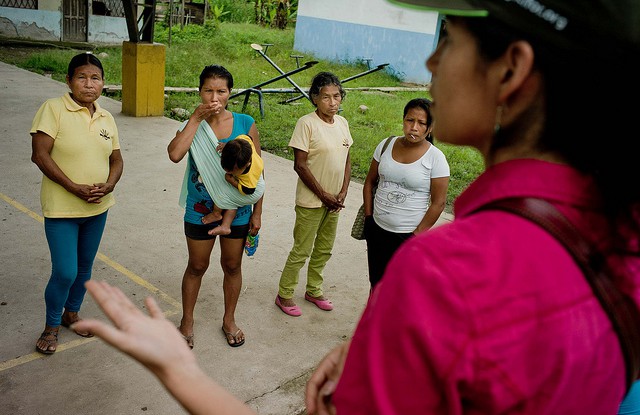
SALT LAKE CITY, USA—Rural women remain “somewhat invisible” to the forestry world, despite a growing understanding of their roles in forest environments, according to a leading expert.
Most forestry institutions “have been ignoring the potential contribution of half the world’s population,” said Carol Colfer, a senior associate with the Center for International Forestry Research (CIFOR) who has been studying anthropology and forests for 20 years.
In a keynote speech at the recent IUFRO 2014 World Congress, Colfer laid out the challenges and opportunities for research to inform sustainable forest management by focusing on people, especially women.
But focusing on women alone “has not been enough,” she said: “We need to look at male-female interactions instead of just what women do and what men do.”
Colfer also urged a closer look at related topics that are typically considered taboo in the cultures being studied, including access to birth control, expectations of domestic responsibilities and violence against women.
Colfer’s focus on gender relations in forested landscapes was part of a broader look at how researchers study human interactions in forests. She spoke of the need for more social scientists in the field to examine issues that she said have not been studied in a systematic way, such as swidden agriculture and the role of forests on nutrition and human health. Although there have been encouraging steps in this direction, she said, attention to these issues has been the exception rather than the rule.
“Most forestry institutions still have little or no community experience or training,” she said. “There has been a very single-minded focus on timber, without much attention to biodiversity or non-timber forest products,” she continued.
And such institutions rarely have any social scientists on staff, she said, contributing to antagonism toward local people who are often criminalized, through government policies, for subsistence activities such as hunting or selective logging.
As a result, “Truly sustainable forest management remains a chimera,” she said.
Colfer then laid out useful approaches for incorporating gender considerations to overcome some of these challenges—not least the need to overcome assumptions related to men and women.
Arbitrary gender roles preclude life chances for men and women alike, she said. “We can and should work toward a forest world in which women’s and men’s strengths, interests and voices can structure their own lives and their interactions with forest landscapes.”
“The result will be worth the effort.”
For more information on gender and forestry, contact Carol Colfer at c.colfer@cgiar.org.
CIFOR’s research on gender forms part of the CGIAR Research Program on Forests, Trees and Agroforestry.
We want you to share Forests News content, which is licensed under Creative Commons Attribution-NonCommercial-ShareAlike 4.0 International (CC BY-NC-SA 4.0). This means you are free to redistribute our material for non-commercial purposes. All we ask is that you give Forests News appropriate credit and link to the original Forests News content, indicate if changes were made, and distribute your contributions under the same Creative Commons license. You must notify Forests News if you repost, reprint or reuse our materials by contacting forestsnews@cifor-icraf.org.
